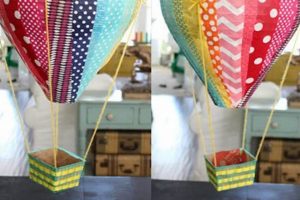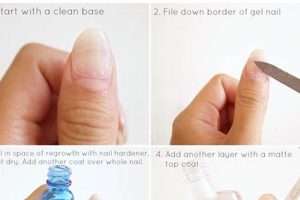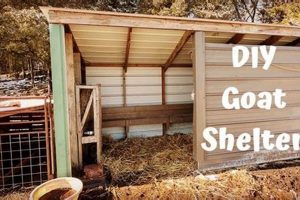The transformation of a square of silk fabric into a wearable garment represents a creative and economical approach to fashion. Employing basic sewing or knotting techniques, an individual can repurpose a silk scarf to create a unique upper-body covering. For example, a large, square scarf can be folded and tied in various ways to produce a halter top, while smaller scarves can be sewn together to form a more structured garment.
Repurposing existing materials contributes to sustainability by reducing textile waste. This method offers a cost-effective alternative to purchasing new clothing, allowing for the creation of personalized designs reflecting individual style. Historically, similar techniques have been utilized across cultures, demonstrating resourcefulness and artistic expression through readily available materials.
The following sections will detail specific techniques for creating various styles of repurposed silk scarf garments, offering guidance on material selection, necessary tools, and step-by-step instructions for successful project completion. Emphasis will be placed on adaptable designs catering to different skill levels and aesthetic preferences.
Crafting Success
Achieving a polished and durable result when crafting repurposed silk garments requires careful attention to detail and strategic planning. The following tips provide guidance for a successful project.
Tip 1: Fabric Selection is Paramount: Opt for high-quality silk scarves with a tight weave. This ensures greater durability and prevents excessive stretching or tearing during construction and wear. Avoid delicate or loosely woven fabrics that may easily unravel.
Tip 2: Prioritize Seam Reinforcement: When sewing sections of silk scarves together, reinforce seams with multiple rows of stitching or consider using French seams for added strength and a clean finish. Silk’s delicate nature necessitates robust seam construction.
Tip 3: Accurate Measurement and Cutting are Essential: Precise measurements are critical for achieving a well-fitting garment. Use sharp scissors or a rotary cutter to ensure clean, even cuts. Inaccurate cuts can result in a distorted or ill-proportioned final product.
Tip 4: Implement Interfacing Strategically: Apply lightweight fusible interfacing to areas requiring structural support, such as necklines or closures. Interfacing prevents stretching and maintains the garment’s intended shape.
Tip 5: Proper Knotting Techniques are Crucial (for knot-based designs): Secure knots tightly and evenly to prevent slippage and maintain the garment’s integrity. Practice knotting techniques beforehand to ensure consistent and aesthetically pleasing results.
Tip 6: Consider Lining for Added Comfort and Opacity: Depending on the scarf’s weave and color, a lining can enhance comfort and prevent transparency. Choose a lightweight, breathable lining material that complements the silk.
Tip 7: Pre-Wash Scarves Before Construction: Pre-washing removes any sizing or finishes from the fabric and helps prevent shrinkage after the garment is completed. This step ensures a consistent fit over time.
By adhering to these guidelines, the likelihood of creating a wearable and long-lasting garment from repurposed silk scarves is significantly increased. The careful application of these techniques contributes to both the aesthetic appeal and structural integrity of the final product.
The following section will address common pitfalls and troubleshooting strategies encountered during the repurposing process, offering solutions to ensure a successful and enjoyable crafting experience.
1. Scarf size and shape
The dimensions and geometry of a silk scarf directly dictate the possibilities and limitations in the creation of a garment. These parameters influence the style, fit, and structural integrity of the resulting wearable.
- Surface Area and Draping Potential
The overall size of the scarf correlates directly with the amount of fabric available for draping and manipulation. Larger scarves offer greater versatility in creating complex designs, allowing for full coverage or elaborate knotting. Conversely, smaller scarves may limit the design to simpler halter tops or bandeau styles due to insufficient fabric for more substantial coverage.
- Shape and Asymmetrical Designs
Square scarves provide symmetry and even distribution of fabric, facilitating balanced designs. Rectangular scarves, on the other hand, lend themselves to asymmetrical styles or designs requiring length rather than width. Triangular scarves inherently suggest a bias-cut effect, allowing for unique draping and shaping possibilities.
- Edge Finishing and Hemlines
The finished edges of the scarf define the hemline of the garment. A scarf with a rolled hem presents a delicate and refined edge, suitable for dressier styles. Fringed edges introduce texture and movement, aligning with bohemian or casual aesthetics. The scarf’s original finishing influences the final garment’s overall aesthetic.
- Seam Placement and Construction
The shape influences seam placement when multiple scarves are combined. Square scarves lend themselves to modular construction, while combining differently shaped scarves requires careful consideration of angles and curves to achieve a cohesive design. Strategic seam placement contributes to fit and structural integrity.
The inherent characteristics of a scarf’s size and shape establish a framework for its potential transformation into a garment. These factors demand careful consideration during the design phase, dictating the feasibility of specific styles and the overall aesthetic outcome. The repurposing process must align with these foundational parameters to yield a successful and wearable creation.
2. Knotting or sewing techniques
The methods employed to secure and shape silk fabric are fundamental to creating a wearable garment. These techniques, whether based on knotting or sewing, determine the structure, durability, and overall aesthetic of the repurposed article.
- Knotting Techniques: Simplicity and Adjustability
Knotting offers a non-permanent method of shaping fabric, relying on tension and friction to create form. This approach requires no specialized equipment and allows for easy adjustments. Examples include halter tops where the scarf is knotted behind the neck and back, or bandeau tops secured with a knot at the front. While simple, knotting techniques may lack the structural integrity of sewn garments, potentially leading to slippage or loosening over time. The fabric type significantly impacts the effectiveness of knotting; smoother silks
may require more intricate knots to prevent unraveling. - Sewing Techniques: Structural Integrity and Durability
Sewing involves permanently joining fabric pieces using thread and needle. This method allows for greater structural complexity and enhanced durability compared to knotting. Examples include creating fitted bodices by sewing darts or side seams into the scarf, or constructing a lined top for added support and opacity. Sewing necessitates basic equipment such as a sewing machine or hand-sewing needles and thread. Proper seam selection and reinforcement are crucial to prevent tearing or unraveling, particularly with delicate silk fabrics.
- Hybrid Approaches: Combining Knotting and Sewing
Integrating both knotting and sewing techniques can leverage the advantages of each. For instance, a basic sewn bodice may incorporate knotted straps or decorative elements. This approach allows for a balance between structural support and adjustable detailing. Considerations include ensuring that the knotted sections complement the sewn areas in terms of style and fabric compatibility.
- Fabric Manipulation Techniques: Darts, Gathers, and Pleats
These are applicable for sewing. Manipulating the fabric by adding darts, gathers, and pleats, enhances the overall shape of the fabric. This method helps in transforming a 2D fabric to 3D outfit.
The selection of knotting or sewing techniques directly impacts the final form and functionality of the silk scarf garment. Knotting offers a quick and adaptable solution, while sewing provides greater structural reliability. The chosen method must align with the desired aesthetic, intended use, and the properties of the specific silk fabric to achieve a successful outcome.
3. Fabric type and weight
The selection of fabric, defined by its type and weight, exerts a significant influence on the design, drape, and structural integrity of a repurposed silk scarf garment. These factors determine the garment’s suitability for specific styles and its overall aesthetic appeal.
- Drape and Flow: Fabric Type Impact
Different silk types exhibit varying drape characteristics. Silk chiffon, known for its lightweight and airy nature, creates a flowing, ethereal silhouette ideal for garments with soft gathers and minimal structure. Silk crepe de chine, with its slightly crinkled texture, offers a more controlled drape suitable for designs requiring a more defined shape. Heavier silk satins, characterized by their lustrous surface, possess a structured drape that lends itself to garments with clean lines and bold shapes. These differences in drape necessitate careful consideration during the design process to ensure the final garment aligns with the desired aesthetic.
- Structural Support: Weight and Interfacing
The weight of the silk fabric directly influences the garment’s structural stability. Lightweight silks, such as habotai, often require interfacing or lining to provide adequate support and prevent stretching. Heavier silks, like dupioni, possess inherent rigidity and can maintain their shape without significant reinforcement. Strategic use of interfacing and lining compensates for the lack of inherent structure in lighter fabrics, enabling the creation of more complex designs.
- Seam Integrity and Durability: Fabric Type and Thread Matching
The fabric type affects seam integrity and overall garment durability. Delicate silk chiffons demand meticulous seam finishing techniques, such as French seams or rolled hems, to prevent fraying and unraveling. Heavier silks can withstand more robust seam construction. Careful thread matching is crucial to avoid visible seams and ensure the thread complements the fabric’s color and texture. Inadequate seam construction can compromise the garment’s longevity, particularly in areas subject to stress or movement.
- Transparency and Lining Considerations: Denier and Color
The denier, a unit of measure for fabric weight that impacts opacity, requires the design to account for transparency. Lightweight fabrics can be sheer and may necessitate lining for modesty or to add structure. Fabric color is more important when working with lightweight materials for this same consideration. Interfacing in the proper color that closely matches the fabric is key to creating and securing layers in the garment.
The careful selection of fabric type and weight is paramount to the successful repurposing of silk scarves into garments. These material properties dictate the garment’s drape, structural integrity, seam durability, and overall aesthetic, influencing both the design possibilities and the longevity of the finished product. Understanding these interdependencies is essential for achieving a wearable and visually appealing outcome.
4. Closure or fastening methods
The implementation of effective closure or fastening methods is integral to the functionality and wearability of any garment fashioned from repurposed silk scarves. These mechanisms ensure the garment remains securely in place, while also influencing the overall design and aesthetic.
- Ties and Knots: Adjustable Security
Employing self-fabric ties or decorative knots represents a simple and adjustable closure solution. These methods often utilize the existing edges or corners of the silk scarf to create secure points of attachment. Examples include tying scarf ends at the back or sides to create a secure fit, or utilizing decorative knots as focal points for fastening. The suitability of this method depends on the fabric’s weight and tendency to slip; lighter fabrics may require more secure knotting techniques or the addition of strategically placed loops.
- Buttons and Loops: Traditional and Reliable
The addition of buttons and loops provides a more traditional and reliable closure method. This approach involves sewing buttons onto one section of the garment and creating corresponding loops on the opposing side. These can be crafted from thread, narrow strips of silk fabric, or elastic for added flexibility. Button and loop closures offer a secure and aesthetically pleasing option, particularly when the buttons complement the scarf’s design. The positioning and number of buttons will determine the adjustability and overall fit of the garment.
- Hook and Eye Closures: Concealed Security
Hook and eye closures provide a discreet fastening option, ideal for maintaining a clean and uncluttered silhouette. These small metal fasteners are sewn onto the garment’s edges, creating a secure and nearly invisible closure. Hook and eye closures are particularly suitable for areas requiring a snug fit, such as necklines or waistbands. Their small size and ease of use make them a practical choice for garments where visual subtlety is desired.
- Snaps and Press Studs: Quick and Easy Fastening
Snaps or press studs offer a quick and efficient method of fastening, providing a secure closure with minimal effort. These closures consist of two interlocking parts that snap together when pressed. Snaps are readily available in various sizes and materials, allowing for customization based on the fabric’s weight and the garment’s aesthetic. They offer a prac
tical and user-friendly option for securing garments made from repurposed silk scarves, particularly in areas where ease of access is important.
The selection of an appropriate closure or fastening method is contingent upon the style, design, and intended use of the repurposed silk scarf garment. Each technique offers unique advantages in terms of security, adjustability, and aesthetic appeal, requiring careful consideration to ensure optimal functionality and visual harmony. The successful integration of a closure mechanism enhances both the wearability and overall value of the finished piece.
5. Design adaptability
Design adaptability, in the context of crafting garments from repurposed silk scarves, refers to the capacity of a design to accommodate variations in scarf size, shape, and inherent fabric characteristics. This flexibility is paramount, as silk scarves are rarely uniform and often possess unique dimensions, patterns, and textures. The successful repurposing of these materials into wearable tops necessitates designs that can be modified or adjusted to suit the available resources.
- Pattern Modification and Scaling
The ability to adjust a garment pattern to accommodate different scarf sizes is critical. A design must allow for scaling up or down to utilize the full potential of the available material. For example, a halter top pattern might need to be shortened or lengthened depending on the scarf’s dimensions. Scaling patterns involves altering measurements while maintaining proportions to ensure a well-fitting garment. This requires an understanding of basic pattern drafting principles and the ability to adapt existing designs to suit specific material constraints.
- Fabric Draping and Manipulation
Design adaptability extends to the manipulation of fabric to achieve the desired shape and fit. Draping techniques, which involve shaping fabric directly on a dress form or body, are particularly useful for adapting designs to the unique drape and flow characteristics of silk scarves. For example, a scarf with a particularly fluid drape might be best suited for a design that emphasizes gathers and folds, while a stiffer scarf might be better suited for a more structured design. The ability to assess a scarf’s drape and manipulate it accordingly is essential for creating a well-fitting and aesthetically pleasing garment.
- Incorporating Existing Design Elements
Adaptable designs utilize the existing patterns or motifs on the scarf as integral elements of the garment. This can involve strategically placing patterns to create focal points or using the scarf’s edges as design features. For example, a scarf with a bold border print might be used to create a striking neckline or hem. Incorporating existing design elements reduces the need for extensive alterations and maximizes the visual impact of the repurposed material. This requires a keen eye for design and the ability to envision how the scarf’s existing patterns can be integrated into a cohesive garment design.
- Adjustable Closures and Fastenings
Incorporating adjustable closures, such as ties, knots, or adjustable straps, enhances the adaptability of a design. These features allow for a customized fit and accommodate variations in body shape or size. For example, a wrap top design with adjustable ties can be easily adapted to fit a range of body types. Adjustable closures also provide flexibility in styling, allowing the garment to be worn in different ways. This adaptability increases the garment’s versatility and makes it more likely to be worn and appreciated.
The facets of design adaptability are interconnected and essential for transforming repurposed silk scarves into wearable garments. The successful integration of pattern modification, fabric draping, incorporation of existing design elements, and adjustable closures ensures that each garment is uniquely tailored to the available material and the wearer’s individual preferences. This adaptability not only maximizes the use of existing resources but also promotes creativity and innovation in garment design.
Frequently Asked Questions
The following addresses prevalent inquiries and misconceptions regarding the transformation of silk scarves into wearable garments, providing clarity and guidance for prospective creators.
Question 1: What is the minimum scarf size required for creating a halter top?
The minimum scarf size generally recommended for a halter top is 26 inches by 26 inches (66cm x 66cm). Smaller dimensions may result in insufficient coverage or difficulty in securing the garment.
Question 2: Is it necessary to pre-wash silk scarves before sewing them into a garment?
Pre-washing silk scarves is strongly advised. This process addresses potential shrinkage and removes any sizing or finishes that may affect the fabric’s drape or colorfastness.
Question 3: What type of thread is most suitable for sewing silk fabrics?
A fine, high-quality thread specifically designed for delicate fabrics is recommended. Silk or polyester thread with a weight of 50-60 is generally appropriate, minimizing puckering and seam stress.
Question 4: How can slippage be prevented when knotting silk scarves into a top?
Employing secure knotting techniques, such as square knots or surgeon’s knots, can mitigate slippage. Alternatively, the addition of strategically placed loops or small fabric ties can enhance stability.
Question 5: Is it necessary to line a silk scarf top, and if so, what material is recommended?
Lining is advisable for added opacity, structure, and comfort. A lightweight, breathable fabric such as silk habotai or cotton voile is generally suitable, complementing the silk’s drape without adding excessive bulk.
Question 6: How should repurposed silk scarf garments be cleaned and maintained?
Hand washing in cool water with a gentle detergent specifically formulated for silk is the recommended cleaning method. Avoid harsh chemicals or machine washing, as these can damage the delicate fibers. Drying flat and away from direct sunlight is crucial to prevent shrinkage or color fading.
The information provided addresses fundamental considerations in silk scarf garment construction. Adherence to these guidelines promotes successful project completion and enhances the longevity of the repurposed article.
The subsequent section will explore specific design examples and step-by-step instructions for various silk scarf garment styles, offering practical application of the aforementioned principles.
Conclusion
The preceding examination of “how to diy your own silk scarf top” elucidates the multifaceted process of transforming a simple textile into a wearable garment. Key points encompass material selection, technique adaptation, and design considerations that collectively influence the final product’s form, function, and longevity. Attentive application of these principles promotes both creative expression and resourcefulness.
The potential for repurposing textiles extends beyond mere utility; it represents a tangible contribution to sustainable practices within the fashion industry. Continued exploration of innovative techniques and designs will further solidify the significance of repurposed garments as a viable and aesthetically compelling alternative to conventional apparel. The pursuit of skill in these methods, and the developme
nt of new approaches, ensures the method remains pertinent and sustainable.







